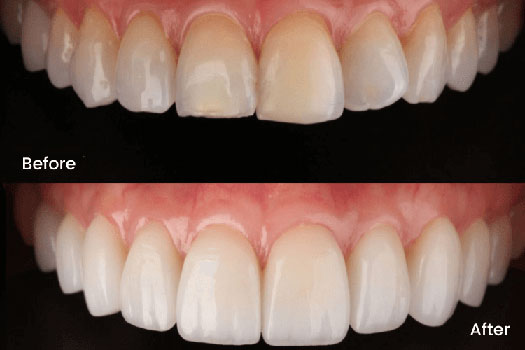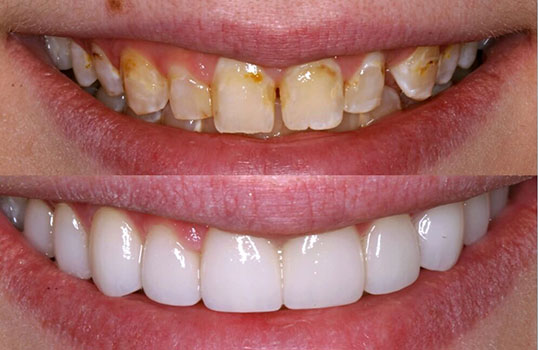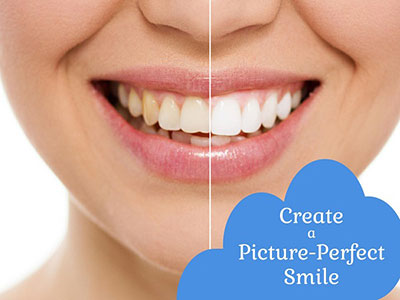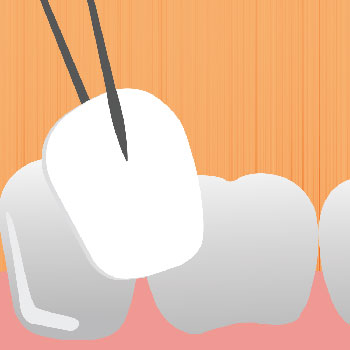At St. Lawrence Dentistry, we craft beautiful porcelain veneers that enhance our patients’ smiles.
Porcelain veneers are slim, customized shells of tooth-colored materials that cover the exterior of teeth, improving their appearance by altering their length, color, shape, or size.

To treat patients with dental veneers, both the dentist and the ceramist must understand the basic principles to achieve predictable results. Exceptional porcelain makes an exceptional veneer. It should be multi-shaded with detailed “incisal” translucency and blend seamlessly with surrounding teeth. The starting point for porcelain veneers is an esthetic wax-up or design, allowing patients to visualize the final look. Patients can then evaluate these temporaries to ensure satisfaction.

Dr. Hawryluk, with his gentle and precise approach, begins preparing your tooth for a veneer by reshaping it to match its thickness. He may use a local anesthetic before trimming off the enamel. We then make a digital scan of your mouth and send the file to our ceramist, who creates your veneer, typically within two weeks.

For incisal reduction, we prepare veneers using an “014” or “016” chamfer and a football diamond. For any bleeding at the gum line, a product that absorbs salivary fluid and contains aluminum chloride to stop bleeding. We finish the margins of the veneer preparation at 10-20 thousand RPM with an electric handpiece. Dr. Hawryluk then positions the veneer on your tooth to study its fit and color, often removing and trimming it to achieve the proper fit before permanently luting it to your tooth. We can modify the veneer hue with the shade of cement.

Before cementing veneers, Dr. Hawryluk cleans their “intaglio” surface to remove salivary contaminants. The two main types of veneers are zirconia and lithium disilicate, each requiring a different cementation protocol. We use Zir-Clean, a cleanser for zirconia and lithium disilicate, then prime the “intaglio” surface. The primer for lithium disilicate is silane, while zirconia requires a particular primer like z-prime. Silane enhances the bonding ability of lithium disilicate to adhesive resin cement. Resin-based cement will not bond to zirconia phosphate, necessitating a primer for proper adhesion. We then clean the tooth’s surface with a 2% chlorhexidine digluconate solution. Our dental cement is a light-cured resin cement that allows precise positioning of the veneer. After proper positioning, we use a curing light to activate the cement, causing it to harden quickly. The final steps involve removing excess cement, checking your bite, and making necessary adjustments. Feel free to bring friends or family to your veneer insertion appointment for their feedback on the esthetics.

St. Lawrence Dentistry is located in Mississauga, Canada. If you’re in the area and looking for a new dentist, please call us! We look forward to helping you achieve a healthy, beautiful smile.
Reference:
https://vivalearning.com/member/classroom.asp?x_source=DENTREK&x_classID=4384
- St. Lawrence Dentistry Looks Forward To St. Patrick’s Day! - March 12, 2025
- Understanding Dental X-Rays and Radiation: What You Should Know - January 13, 2025
- Happy New Year from St. Lawrence Dentistry! - December 30, 2024









